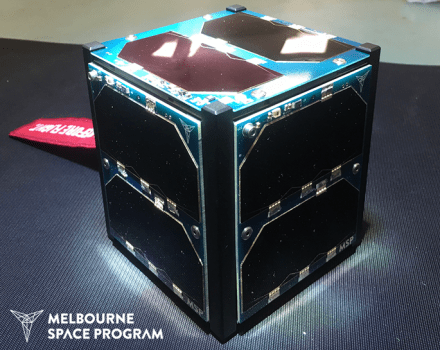A sampling of recent articles, press releases, etc. related to student and amateur CubeSat / SmallSat projects and programs:
** Students in the Melbourne Space Program built ACRUZ-1 smallsat to launch on next Rocket Lab Electron rocket: ACRUX-1 headed to space on Rocket Lab’s next Electron rocket launch | Melbourne Space Program
ACRUX-1 was designed and built by engineering students, with the support of regulatory and business teams as well as professional development and marketing teams.
The Melbourne Space Program is a not-for-profit education organisation run entirely by volunteers – students from universities across Melbourne with a vision to launch the next generation of technology pioneers.

See also What does mission success mean for ACRUX-1? | Melbourne Space Program
** Students at the University of North Texas College of Engineering design CubeSat solar panels with shape memory metal to maximize energy efficiency: Shape memory alloy technology leads to energy-efficient CubeSat – Univ. of Northern Texas
A team of University of North Texas College of Engineering seniors have created an energy efficient system for controlling solar panels on CubeSats using a nickel-titanium shape memory alloy.
Their design beat out teams from nine other universities to take first place at the CASMART 3rd Student Design Challenge in Germany. The international engineering competition for undergrad and graduate students asked teams to create innovative technologies using shape memory alloy.
…
The system designed by Ayers, and fellow Department of Mechanical and Energy Engineering students Brittany Thurstin, Kelsa Adams, Jordan Barnes, Robert Boone and David Evers opens, closes and moves a CubeSat’s solar panels in space using just 20 watts of battery power.
“For this project, we developed three separate shape memory alloy mechanisms for our CubeSat, named Penny, a retention mechanism that holds the solar panels in place during launch, a deployment mechanism that extends the solar panels into space and an actuator that moves the panels to follow the sun,” said Thurstin. “Applying a minimal amount of electricity provides all the mechanical energy needed to get the satellite up and running. We actually built a CubeSat to show just how the shape memory alloy system would work.”
** Israeli 17 year old wins entrepreneurial creativity contest award with his CubeSat designs:
Geffen Avraham, 17, of Hod Hasharon, Israel,
is making a next-generation CubeSat, a small satellite that can fit in the palm of your hand. His satellite parts will cost 10-100x less than usual, using smartphone technologies. By substantially lowering prices to affordable levels for schools and individuals, Geffen plans to democratize space.
Noteworthy: Geffen designed a CubeSat mission to one of Saturn’s moons, leading him to become the only high-schooler invited to an academic space conference in China. Last year, at 16, he left school to pursue his passion for building satellites at a local laboratory. He’s also currently working on a program to tell where (on Earth) a satellite picture was taken.
** AMSAT news on student and amateur CubeSat/smallsat projects: ANS-167 AMSAT News Service Special Bulletin
- AMSAT Field Day on the Satellites
- Dollar-for-Dollar Match on your ARISS Donation Ends Monday!
- AMSAT Operations Updates AO-85 Status / AO-92 Field Day Plans
- AMSAT Engineering Slides From Ham-Com
- BIRDS-3 Satellites Deploy From ISS on June 17th
- IARU Region 1 Notes WRC-23 Proposals That Impact 144-146 MHz and 1260-1270 MHz Amateur Satellite Service Bands
- Changes to AMSAT-NA TLE Distribution for June 13, 2019
- How to Support AMSAT
- Upcoming Satellite Operations
- Satellite Shorts from All Over
General CubeSat/SmallSat info:
- Projects:
- Japan Eyes World’s First Release of Water-Propelled CubeSat from ISS | Nippon.com
- Experiment to Demo ‘Cloud’ Technology in Space – National Defense Magazine
- Pasadena-Based Planetary Society’s LightSail 2 Waits for Wind After Postponed Launch – Pasadena.com
- Cal Poly collaboration with Amazon Web Services to provide vital public services | KSBY.com
- Team from National Centre of Space Technologies of Technical University of Moldova selected for fourth round of KiboCUBE – UNOOSA
====
The Case for Space:
How the Revolution in Spaceflight Opens Up
a Future of Limitless Possibility